Dynamic Pricing Strategy of Charging Station Based on Traffic Assignment Simulation
Abstract
1. Introduction
2. Literature Review
3. Framework for Pricing Strategy
4. Dual Network Collaborative Simulation of Traffic Demand and Power Grid
4.1. Demand Allocation
4.2. Calculation of Variables during Travel
4.2.1. Calculation of Travel Time
4.2.2. Energy Consumption Model
4.2.3. Charging Decision Model
- Charging probability model;
- Charging selection model considering electricity price:
4.2.4. Charging Time Model
4.3. Grid Load Simulation
5. Optimization Model and Solution
5.1. Objective Function and Constraint Conditions
5.2. Solution Method
- (1)
- Initialize road network information, travel information, electric vehicle status, algorithm initialization price.
- (2)
- Simulate the unit time of operation and get the power grid state under different electricity prices.
- (3)
- Adjust the electricity price solution through heuristic search, and return (2) to (3) until the condition of falling is met.
- (4)
- Get the solution through (3) as the initial state of the next period and jump to (2). If it is greater than the simulation time, jump to (5).
- (5)
- Solve all time periods.
6. Numerical Studies
6.1. Electric Vehicle Operation Simulation
6.1.1. Parameter Settings
6.1.2. Continuous Simulation and Comparison Results of Charging Station and Power Grid
6.2. Electricity Price Optimization Results of Electricity Price
6.3. Comparison of Power Grid with Different Input Requirements
7. Conclusions
Author Contributions
Funding
Institutional Review Board Statement
Informed Consent Statement
Data Availability Statement
Acknowledgments
Conflicts of Interest
Appendix A
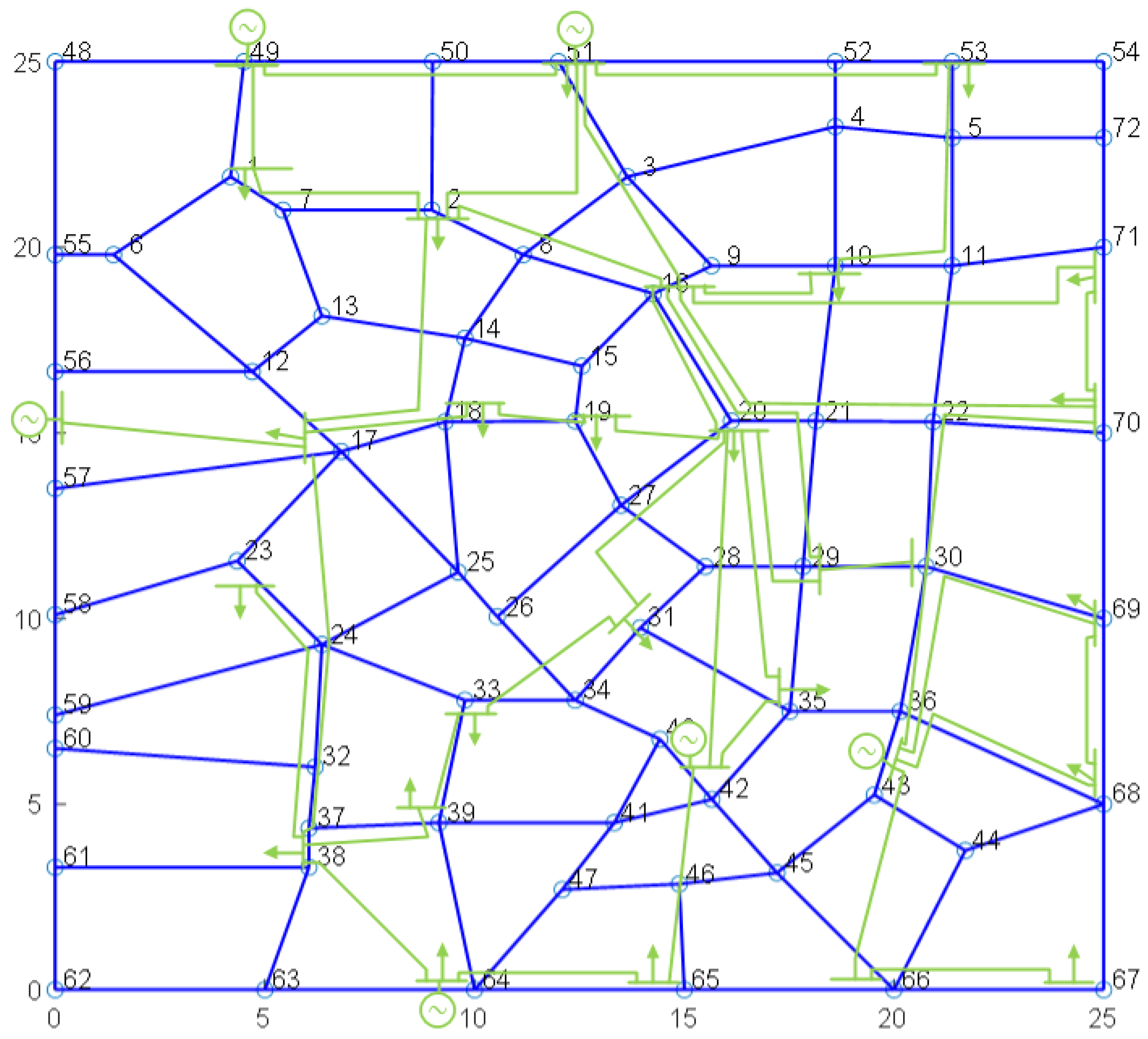
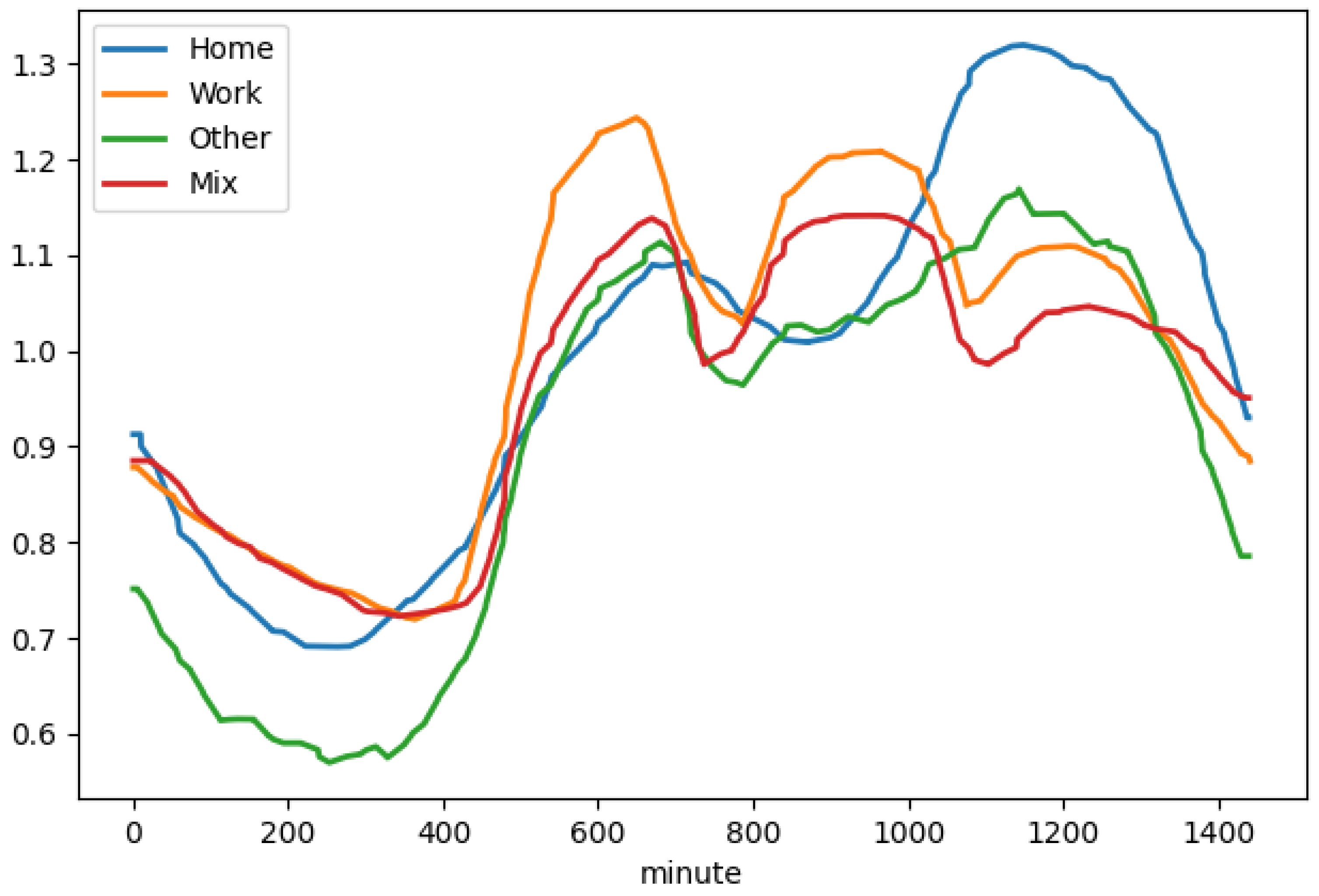
References
- Zou, C.; Xiong, B.; Xue, H. The role of new energy in carbon neutral. Pet. Explor. Dev. 2021, 48, 480–491. [Google Scholar] [CrossRef]
- EV-Volumes—The Electric Vehicle World Sales Database. Available online: https://www.ev-volumes.com/ (accessed on 22 July 2022).
- Tan, K.M.; Ramachandaramurthy, V.K.; Yong, J.Y. Integration of electric vehicles in smart grid: A review on vehicle to grid technologies and optimization techniques. Renew. Sustain. Energy Rev. 2016, 53, 720–732. [Google Scholar] [CrossRef]
- Rubino, L.; Capasso, C.; Veneri, O. Review on plug-in electric vehicle charging architectures integrated with distributed energy sources for sustainable mobility—ScienceDirect. Appl. Energey 2017, 207, 438–464. [Google Scholar] [CrossRef]
- Xu, P.; Zhang, J.; Gao, T.; Chen, S.; Wang, X.; Jiang, H.; Gao, W. Real-time fast charging station recommendation for electric vehicles in coupled power-transportation networks: A graph reinforcement learning method. Int. J. Electr. Power Energy Syst. 2022, 141, 108030. [Google Scholar] [CrossRef]
- Basta, B.; Morsi, W.G. Low and high order harmonic distortion in the presence of fast charging stations. Int. J. Electr. Power Energy Syst. 2021, 126, 106557. [Google Scholar] [CrossRef]
- Yao, Y.; Lu, J.; Fu, Y.; Xue, J.; Zhu, B. Electric vehicle development trends and electricity demand forecast in East China. Power Syst. Prot. Control. 2021, 49, 141–145. [Google Scholar]
- Amjad, M.; Ahmad, A.; Rehmani, M.H.; Umer, T. A review of EVs charging: From the perspective of energy optimization, optimization approaches, and charging techniques. Transp. Res. Part D Transp. Environ. 2018, 62, 386–417. [Google Scholar] [CrossRef]
- Leou, R.C.; Su, C.L.; Lu, C.N. Stochastic Analyses of Electric Vehicle Charging Impacts on Distribution Network. IEEE Trans. Power Syst. 2014, 29, 1055–1063. [Google Scholar] [CrossRef]
- Liu, A.; Yuan, X.; Jing, L.I. Research on Orderly Charging Strategy of Residential Electric Vehicle Based on Time-of-use Electricity Price. J. Guizhou Univ. (Nat. Sci.) 2017, 34, 54–58. [Google Scholar]
- Tucker, N.; Alizadeh, M. An Online Admission Control Mechanism for Electric Vehicles at Public Parking Infrastructures. IEEE Trans. Smart Grid 2020, 11, 161–170. [Google Scholar] [CrossRef]
- Wang, R.; Mu, J.; Sun, Z.; Wang, J.; Hu, A. NSGA-II multi-objective optimization regional electricity price model for electric vehicle charging based on travel law. Energy Rep. 2021, 7, 1495–1503. [Google Scholar] [CrossRef]
- Cui, Y.; Hu, Z.; Duan, X. Review on the Electric Vehicles Operation Optimization Considering the Spatial Flexibility of Electric Vehicles Charging Demands. Power Syst. Technol. 2021, 46, 981–994. [Google Scholar]
- McCafferty, D.; Hall, F.L. The Use of Multinomial Logit Analysis to Model the Choice of Time to Travel. Econ. Geogr. 1982, 58, 236–246. [Google Scholar] [CrossRef]
- Li, Y.; Zhan, C.; De Jong, M.; Lukszo, Z. Business innovation and government regulation for the promotion of electric vehicle use: Lessons from Shenzhen, China. J. Clean. Prod. 2016, 134, 371–383. [Google Scholar] [CrossRef]
- Turker, H.; Bacha, S. BachaOptimal Minimization of Plug-In Electric Vehicle Charging Cost With Vehicle-to-Home and Vehicle-to-Grid Concepts. IEEE Trans. Veh. Technol. 2018, 67, 10281–10292. [Google Scholar] [CrossRef]
- AHuang, J.; Wang, X.; Shao, C.; Song, Z.; Wang, Y.; Shuai, X. An Improved Charging Navigation Strategy of Electric Vehicles via Optimal Time-of-Use Pricing. Electr. Power Syst. Res. 2022, 210, 108077. [Google Scholar]
- Tan, J.; Wang, L. Real-Time Charging Navigation of Electric Vehicles to Fast Charging Stations: A Hierarchical Game Approach. IEEE Trans. Smart Grid 2017, 8, 846–856. [Google Scholar] [CrossRef]
- Lee, W.; Xiang, L.; Schober, R.; Wong, V. Electric vehicle charging stations with renewable power generators: A game theoretical analysis. IEEE Trans. Smart Grid 2015, 6, 608–617. [Google Scholar] [CrossRef]
- Yang, D.; Sarma, N.; Hyland, M.; Jayakrishnan, R. Dynamic Modeling and Real-time Management of a System of EV Fast-charging Stations. Transp. Res. Part C Emerg. Technol. 2020, 128, 103186. [Google Scholar] [CrossRef]
- Nguyen, H.; Zhang, C.; Mahmud, M.A. Optimal coordination of G2V and V2G to support power grids with high penetration of renewable energy. IEEE Trans. Transp. Electrif. 2015, 1, 188–195. [Google Scholar] [CrossRef]
- Xu, P.; Li, J.; Sun, X.; Zheng, W.; Liu, H. Dynamic Pricing at Electric Vehicle Charging Stations for Queueing Delay Reduction. In Proceedings of the 2017 IEEE 37th International Conference on Distributed Computing Systems (ICDCS), Atlanta, GA, USA, 5–8 June 2017; pp. 2565–2566. [Google Scholar]
- Dong, X.; Mu, Y.; Xu, X.; Jia, H.; Wu, J.; Yu, X.; Qi, Y. A charging pricing strategy of electric vehicle fast charging stations for the voltage control of electricity distribution networks. Appl. Energy 2018, 225, 857–868. [Google Scholar] [CrossRef]
- Gong, L.; Cao, W.; Liu, K.; Zhao, J. Optimal charging strategy for electric vehicles in residential charging station under dynamic spike pricing policy. Sustain. Cities Soc. 2020, 63, 102474. [Google Scholar] [CrossRef]
- Guo, J.; Li, X. Annual Report on Development of Beijing Transportation (2016); Beijing Transport Institute: Beijing, China, 2016. [Google Scholar]
- Huang, J.; Wang, X.; Wang, Y.; Ma, Z.; Zhang, H. Charging Navigation Strategy of Electric Vehicles Considering Time-of-Use Pricing. In Proceedings of the 2021 6th Asia Conference on Power and Electrical Engineering, Chongqing, China, 8–11 April 2021. [Google Scholar]
- Kai, D. Prospect Theory: An Analysis of Decision under Risk. Econom. Soc. 1979, 47, 263–291. [Google Scholar]
- Zhang, H.; Wen, F.; Zhang, C.; Tian, C. Prospect Theory Based Multiple-attribute Decision-making Method for Determining Portfolio of Construction Projects in Power Systems. Autom. Electr. Power Syst. 2016, 40, 8–14. [Google Scholar]
- Hang, L.; Xu, C.; Wang, L.; Li, J.L.; Chen, X.; Yang, X.; Shi, Y. OD matrix based spatiotemporal distribution of EV charging load prediction. Power Syst. Prot. Control. 2021, 49, 82–91. [Google Scholar]
- Cao, F.; Li, S.; Zhang, Y. Emporal and Spatial Distribution Simulation of EV Charging Load Considering emporal and Spatial Distribution Simulation of EV Charging Load Considering Temporal and Spatial Distribution Simulation of EV Charging Load Considering Charging Station Attactrveness. Power Syst. Technol. 2021, 45, 11. [Google Scholar]
- Davis, B.M.; Bradley, T.H. The Efficacy of Electric Vehicle Time-of-Use Rates in Guiding Plug-in Hybrid Electric Vehicle Charging Behavior. IEEE Trans. Smart Grid 2012, 3, 1679–1686. [Google Scholar] [CrossRef]
- Sun, X.H.; Yamamoto, T.; Morikawa, T. Fast-charging station choice behavior among battery elec-tric vehicle users. Transp. Res. Part D 2016, 46, 26–39. [Google Scholar] [CrossRef]
- Storn, R.; Price, K. DE-a simple and efficient heuristic for global optimization over continuous space. J. Glob. Optim. 1997, 114, 341–359. [Google Scholar] [CrossRef]
- Chen, L.; Zhang, Y.; Figueiredo, A. Charging load forecasting of electric vehicles based on multi-source information fusion and its influence on distribution network. Electr. Power Autom. Equip. 2018, 38, 1–10. [Google Scholar]
- Li, Z.; Yu, L.; Gao, Y.; Wu, Y.; Song, G.; Gong, D. Identifying Temporal and Spatial Characteristics of Residents’ Trips from Cellular Signaling Data: Case Study of Beijing. Transp. Res. Rec. 2018, 2672, 81–90. [Google Scholar] [CrossRef]
- Zeinab, M.; Iftekhar, A.; Daryoush, H. A Coordinated Dynamic Pricing Model for Electric Vehicle Charging Stations. IEEE Trans. Trans. Electrif. 2019, 5, 226–238. [Google Scholar]


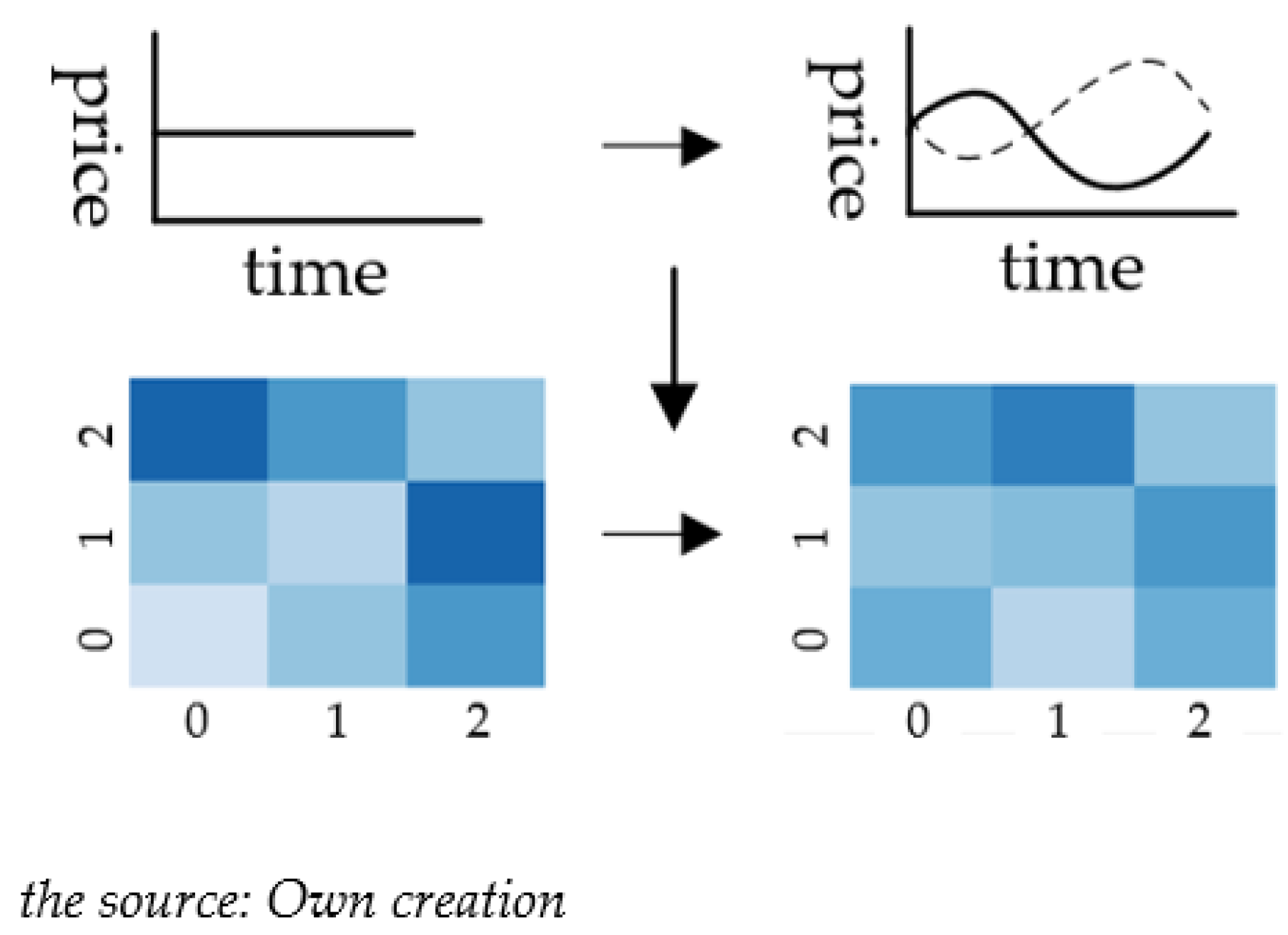

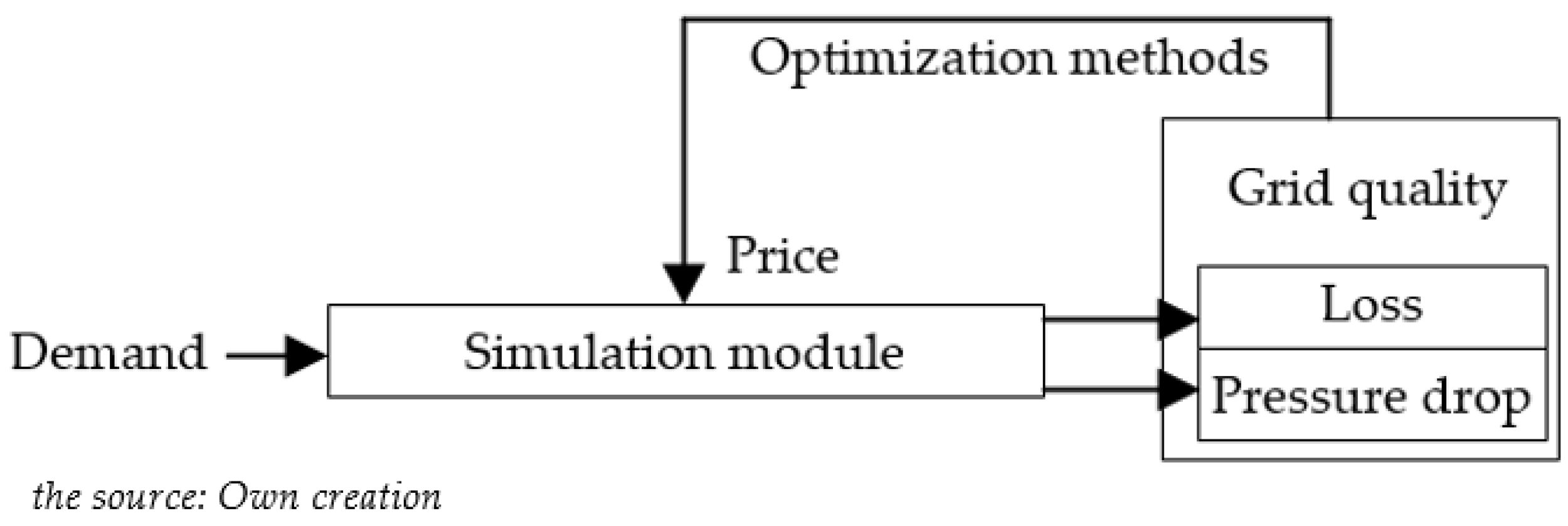

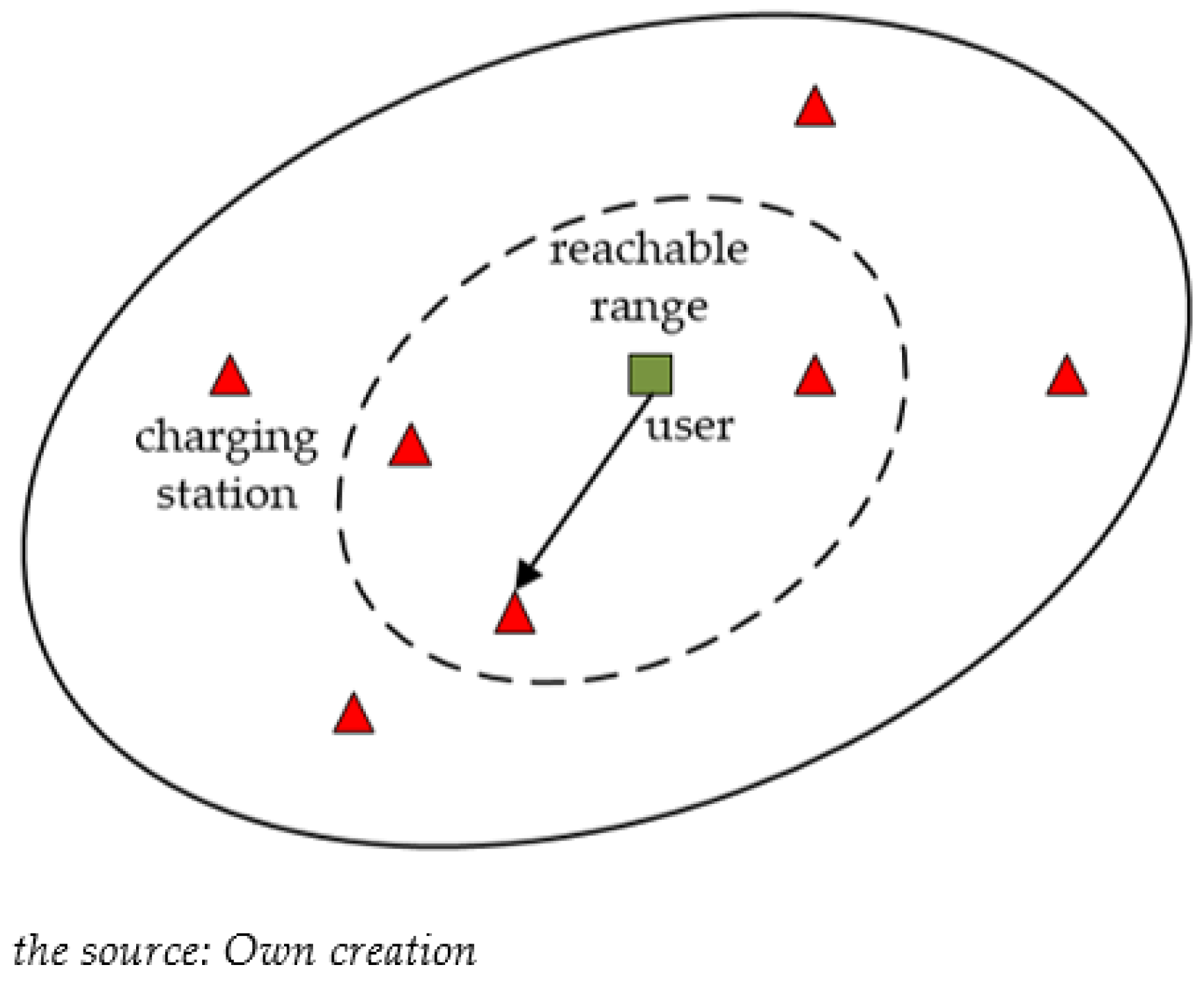
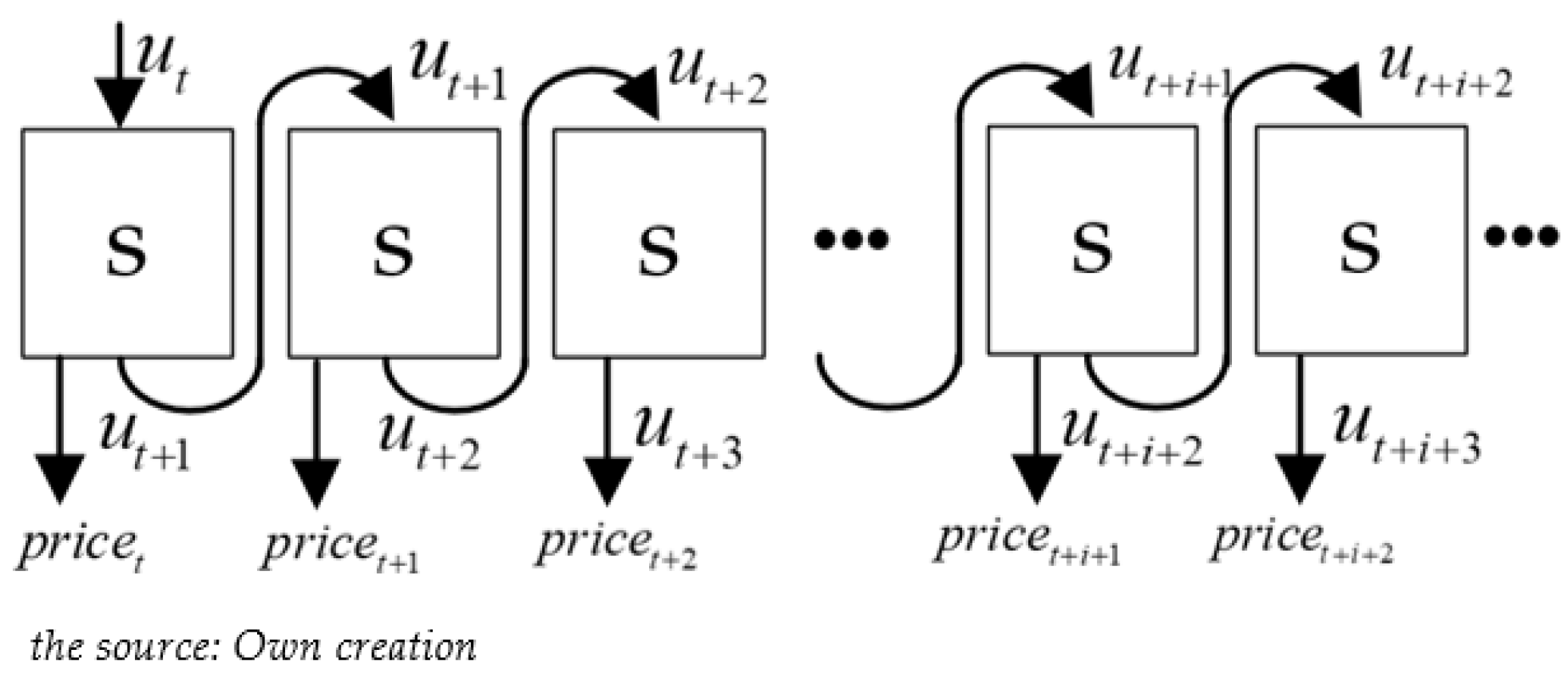
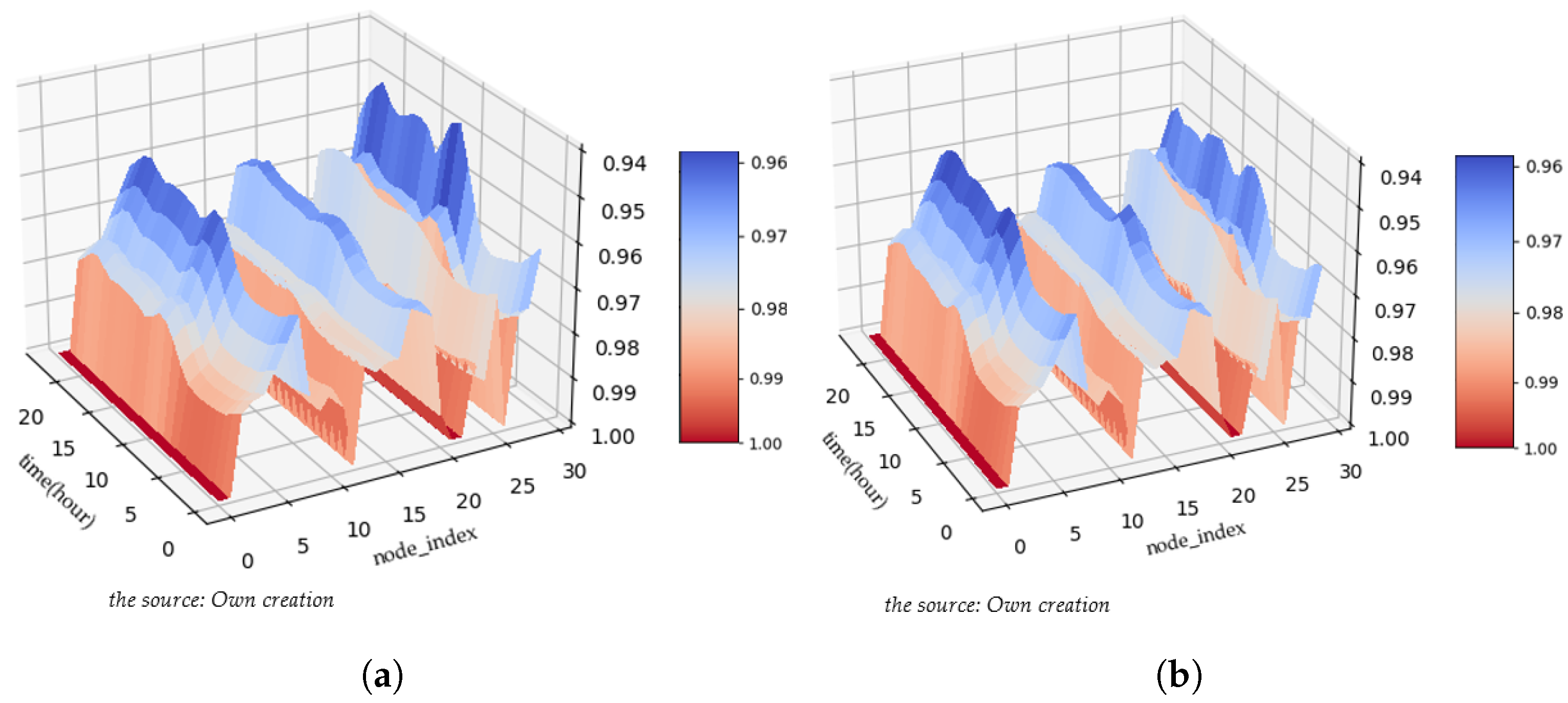

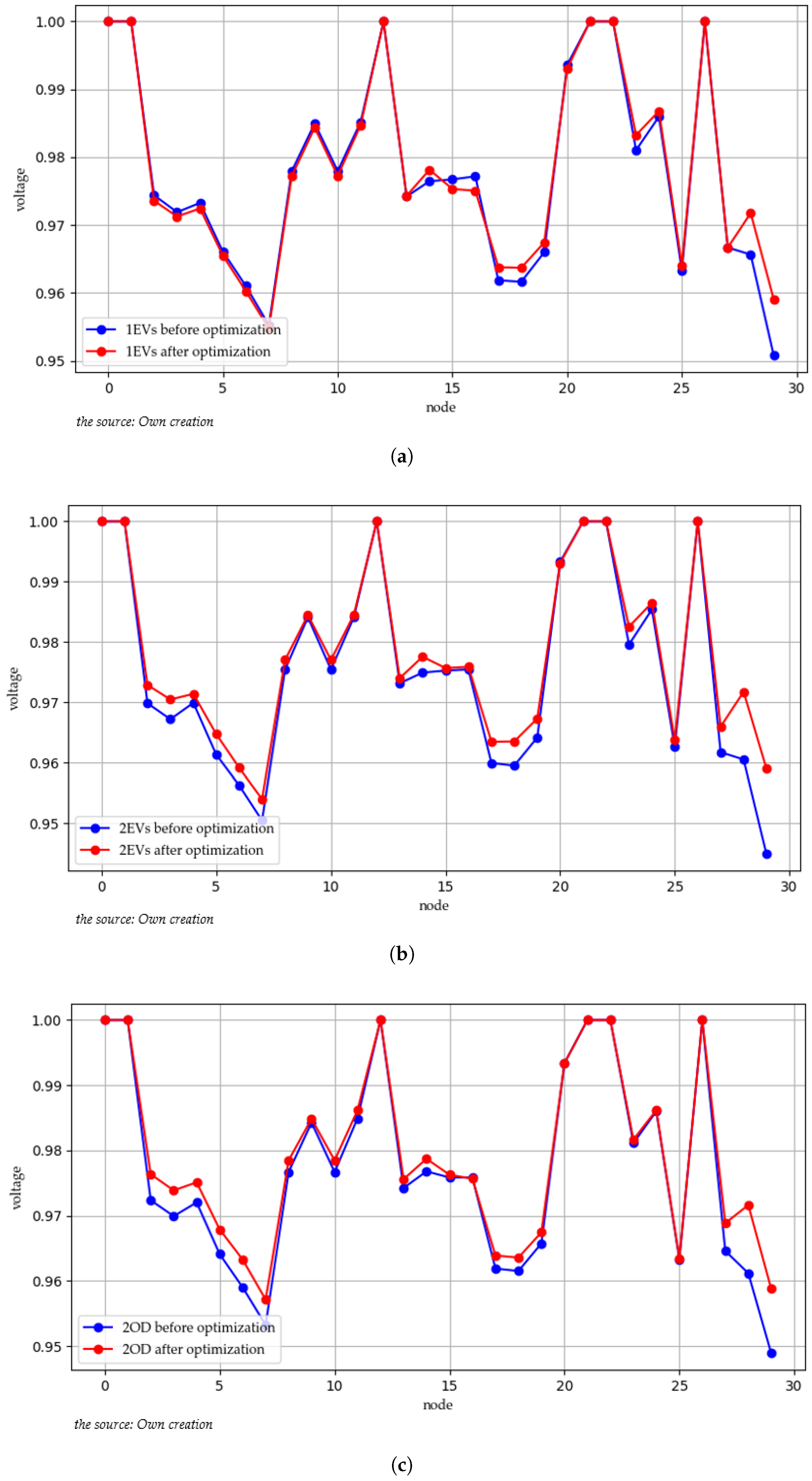
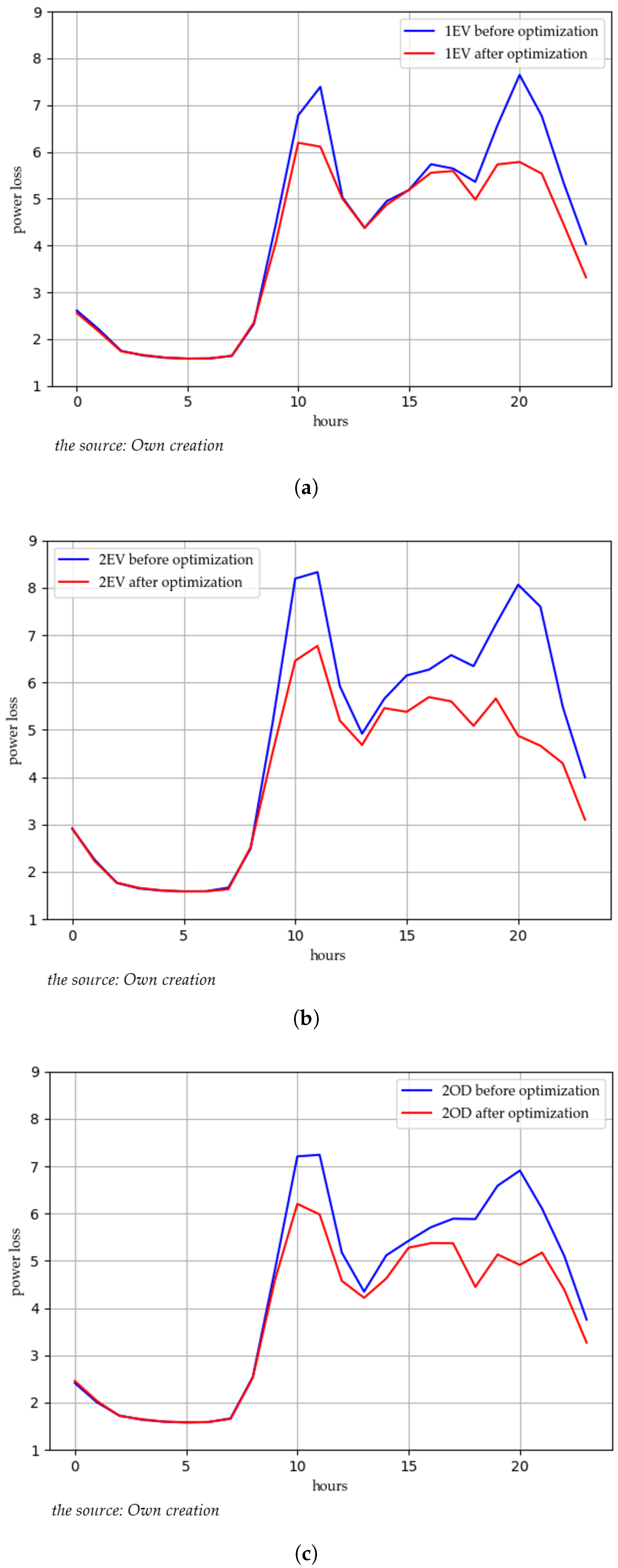
| Congestion State | Index of the Traffic | Travel Time Consumption |
|---|---|---|
| open | [0,2) | Basic road speed limit standard driving |
| generally smooth | [2,4) | A trip takes 0.3 to 0.5 times longer |
| slightly congested | [4,6) | A trip takes 0.5 to 0.8 times longer |
| moderately congested | [6,8) | A trip takes 0.8 to 1.0 times longer |
| Severe congestion | [8,10) | A trip takes more than 1.0 times longer |
Publisher’s Note: MDPI stays neutral with regard to jurisdictional claims in published maps and institutional affiliations. |
© 2022 by the authors. Licensee MDPI, Basel, Switzerland. This article is an open access article distributed under the terms and conditions of the Creative Commons Attribution (CC BY) license (https://creativecommons.org/licenses/by/4.0/).
Share and Cite
Tan, J.; Liu, F.; Xie, N.; Guo, W.; Wu, W. Dynamic Pricing Strategy of Charging Station Based on Traffic Assignment Simulation. Sustainability 2022, 14, 14476. https://doi.org/10.3390/su142114476
Tan J, Liu F, Xie N, Guo W, Wu W. Dynamic Pricing Strategy of Charging Station Based on Traffic Assignment Simulation. Sustainability. 2022; 14(21):14476. https://doi.org/10.3390/su142114476
Chicago/Turabian StyleTan, Jiyuan, Fuyu Liu, Na Xie, Weiwei Guo, and Wenxiang Wu. 2022. "Dynamic Pricing Strategy of Charging Station Based on Traffic Assignment Simulation" Sustainability 14, no. 21: 14476. https://doi.org/10.3390/su142114476
APA StyleTan, J., Liu, F., Xie, N., Guo, W., & Wu, W. (2022). Dynamic Pricing Strategy of Charging Station Based on Traffic Assignment Simulation. Sustainability, 14(21), 14476. https://doi.org/10.3390/su142114476






